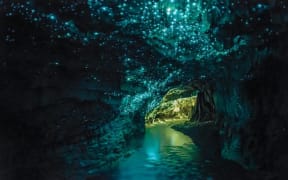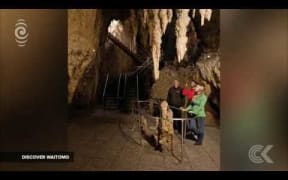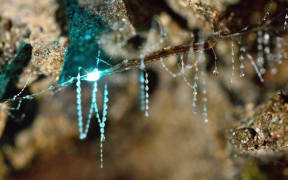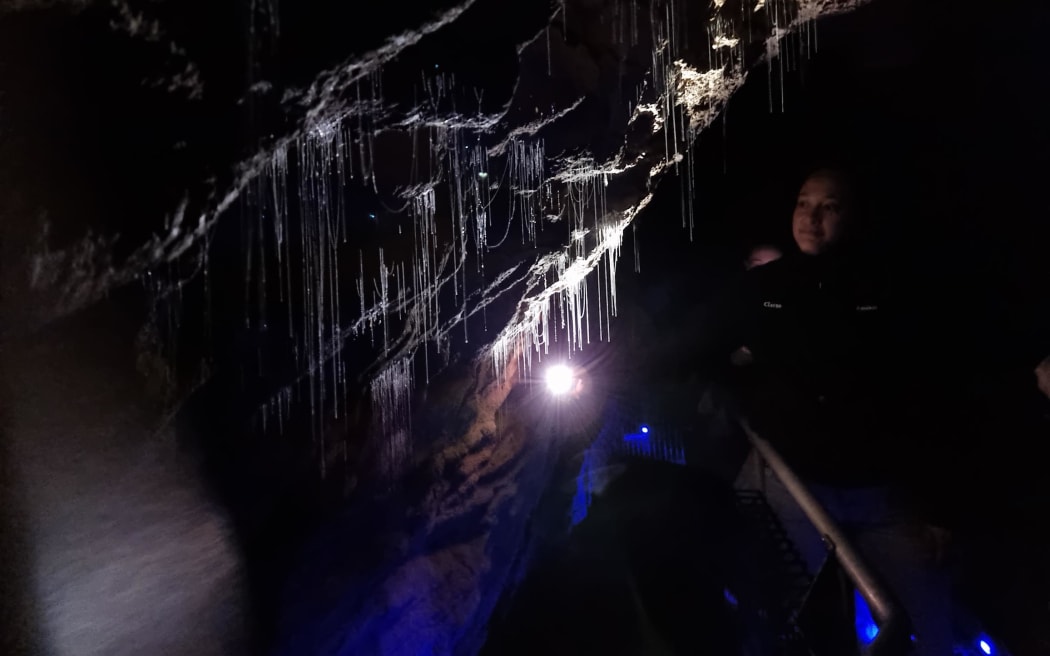
Glow worm threads are important for glow worm feeding. Photo: RNZ / Libby Kirkby-McLeod
Dip down into a valley south of Hamilton and you come to one of New Zealand's most unique environments - Waitomo.
Famous for its caves and glow worms, Covid-19 lockdowns gave scientists an unexpected opportunity to learn more about the underground ecosystem.
Pre-Covid visitor numbers to Waitomo were large, with big groups particularly attracted to the famous glow worm cave.
Matt Harvey, chief operating manager of Discover Waitomo's parent company Tourism Holdings, said there was nothing to indicate that this was particularly bad for the caves, but they are looking at how tourism can regrow with a different model.
"We've reduced our tour sizes now, which really gives an enhanced experience for customers going through in that environment."
The company now aimed to disperse visitors across the whole region into different caves which offered a range of experiences.
It was known too many people breathing out too much carbon dioxide can lead to erosion of the cave walls and growths such as stalactites, the very attractions so many want to see.
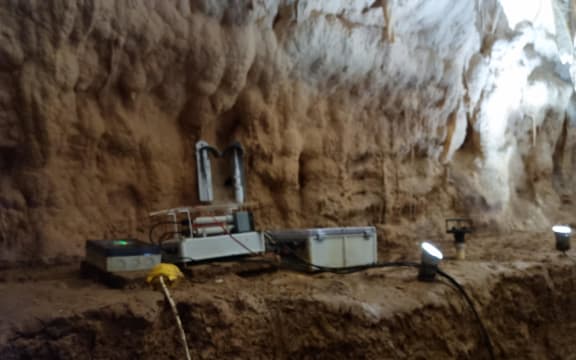
Carbon dioxide monitoring equipment inside a cave. Photo: RNZ / Libby Kirkby-McLeod
The lockdowns during Covid allowed a remarkable opportunity to gather baseline data from the extensive CO2 monitoring systems in the caves.
Discover Waitomo's environmental manager Shannon Corkill said this baseline data fed into a predictive algorithm which took into account other factors, like the forecasted temperature, to say what visitor numbers should be for each day.
"We can then adjust that ticket availability accordingly, and also make sure the guides are aware how they can operate to keep those CO2 levels nice and low," Corkill said.
However, ensuring the cave environment is managed sustainably was not all down to modern computing. Harvey said it also came down to some basics.
"Making sure people aren't touching the caves, damaging things inside, that they are sticking to the tracks."
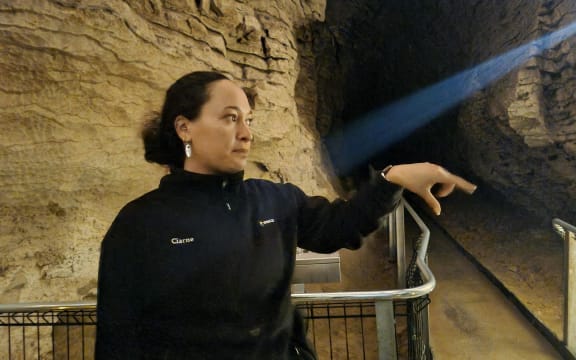
Discover Waitomo tour guide Ciarne. Photo: RNZ / Libby Kirkby-McLeod
This was a message reinforced by cave guides like Ciarne. Leading visitors through the largest cave in the Waitomo area Ruakuri Cave, she stopped and pointed out some glow worms visitors could get nice and close to - but not too close.
"There are tiny little threads that hang down from the glow worm. Please don't go too close to them, or breathe on them, because then they will get tangled up and [the glow worm] won't be able to eat and they will die," she warned.
Threats to the cave environment can come from many directions, not all human. Recently it was feared that koi carp, an invasive fish species, had entered the caving waterways.
Daniel Thorne, general manager of Discover Waitomo, said there had been no evidence to confirm this.
"There were no confirmed koi carp sightings. We also do eDNA sampling - which are some of the highest and most specific testing - which has all returned back negative."
Proactive monitoring of this, and other potential risks and hazards was ongoing.
